TARDIS Collector’s Corner: Big Chief Mini 12th Doctor TARDIS accessory (The Shotglass TARDIS series)
(An ongoing writing project in which I catalog and quantify my extensive TARDIS collection. Find previous entries HERE.)
I’ve written here before about some of the White Whales of my TARDIS collection, chief among them being any of the Big Chief Studios TARDISes. Big Chief Studios is a toy company known for manufacturing larger to-scale figures of a number of different properties, Doctor Who being a major licensee. Their 1:6 scale figures are designed to be the ultimate fan version of any given character, with fully articulated limbs, painstakingly perfect likenesses, tailored clothing, multiple hands for multiple poses, and accessories that clearly have had a lot of thought put into them. They also run around $250 retail, sell out very quickly, and then become extravagantly priced on the secondary market. I own none of them, nor do I have plans to unless I just spotted a really cheap one somewhere.
Their figures are impressive. Their TARDISes are also no exception to the high-quality standards, and are far more expensive, running around $460 ‘merican. They are massive, cast in resin stone, and basically have all of the same light and sound features of the 10th Doctor Flight Control TARDIS (which, as I’ve mentioned, is my favorite TARDIS toy ever) and then even more features piled on top of those. Things like a removable roof allowing for interior TARDIS backgrounds to be swapped out, so that different TARDIS control rooms may be displayed, (important for the 11th and 12th Doctor eras, which had multiple control rooms and variations on the décor within those).
Unfortunately, the $450 average retail price tag, which jumps far higher in secondary markets, is just more than I can really justify spending on a toy. (Actually, I could rationalize such a purchase just fine. It’s my wife who would definitely have something else to say about it.) I mean, I recently saw a really nice-looking full-size old school TARDIS replica on sale for $550, which also had working lights. It looked amazing and far better than most home-made TARDIS props turn out. If i was going to spend that kind of money, it had better be for a TARDIS I can step inside, right? (And if I didn’t live on the other side of the continent from its location, and have no practical place to put it, I would have had a hard time not buying it–though don’t think I didn’t start looking up shipping companies all the same.)
While $100 cheaper, the Big Chief TARDIS even at 1:6 scale would still take up a massive chunk of real-estate in my office that might otherwise be devoted to, say, a pickle bucket. (BTW, I already have a pickle bucket in my office. I use it as my recycle bin, but it is, in fact, a prop from a play I wrote.)
Just watch this video of the Big Chief Studios 1/6 scale 11th Doctor TARDIS and you’ll see what I mean.
 While this entry might be the closest I ever come to writing a personal review of any of the 1:6 scale Big Chief Studios TARDISes, it is fortunately not the only review I can write of a Big Chief Studios TARDIS that I own. As I mentioned, the Big Chief Doctor Who figures always come equipped with very thoughtfully chosen accessories. The Peter Capaldi 12th Doctor figure, for instance, comes with quite a few extras many of which are in-jokes and props from the show. He has: two sonic screwdrivers (the green one he inherited from Smith, not the blue light one he later adopted, with one version closed and one open) a few extra hands, a rubber glove, a spoon, the psychic paper, a pocket watch, a jelly baby case with little mini-jelly babies inside. He also comes with two mini TARDi both of which came from one of my favorite Capaldi stories, “Flatline.” One is the cube-like Siege Mode TARDIS, which the TARDIS went into after an assault from beings from another dimension which were wrecking havoc on its dimensional stabilizers, causing its exterior to shrink in size; and the other is one of the miniaturized versions of said shrunken TARDIS that Clara had to carry around in her purse and which the Doctor later had to drag around from the inside by reaching his hand through the tiny doors, Thing from Addams Family-style. If you’ve not seen the story, it’s wonderful and inventive and I wish someone would give Jamie Mathieson more to do on that show.
While this entry might be the closest I ever come to writing a personal review of any of the 1:6 scale Big Chief Studios TARDISes, it is fortunately not the only review I can write of a Big Chief Studios TARDIS that I own. As I mentioned, the Big Chief Doctor Who figures always come equipped with very thoughtfully chosen accessories. The Peter Capaldi 12th Doctor figure, for instance, comes with quite a few extras many of which are in-jokes and props from the show. He has: two sonic screwdrivers (the green one he inherited from Smith, not the blue light one he later adopted, with one version closed and one open) a few extra hands, a rubber glove, a spoon, the psychic paper, a pocket watch, a jelly baby case with little mini-jelly babies inside. He also comes with two mini TARDi both of which came from one of my favorite Capaldi stories, “Flatline.” One is the cube-like Siege Mode TARDIS, which the TARDIS went into after an assault from beings from another dimension which were wrecking havoc on its dimensional stabilizers, causing its exterior to shrink in size; and the other is one of the miniaturized versions of said shrunken TARDIS that Clara had to carry around in her purse and which the Doctor later had to drag around from the inside by reaching his hand through the tiny doors, Thing from Addams Family-style. If you’ve not seen the story, it’s wonderful and inventive and I wish someone would give Jamie Mathieson more to do on that show.
I happened to spot one of these mini-purse TARDi accessories for sale, loose, on ebay and snatched it up. I can’t recall what I paid for it and my ebay history doesn’t go back that far, which is disappointing, but I seem to recall getting a good deal on it. (No surprise, though, of the last ten purchases ebay displays, three of them were TARDISes and five others Doctor Who-related. I may have a problem.)
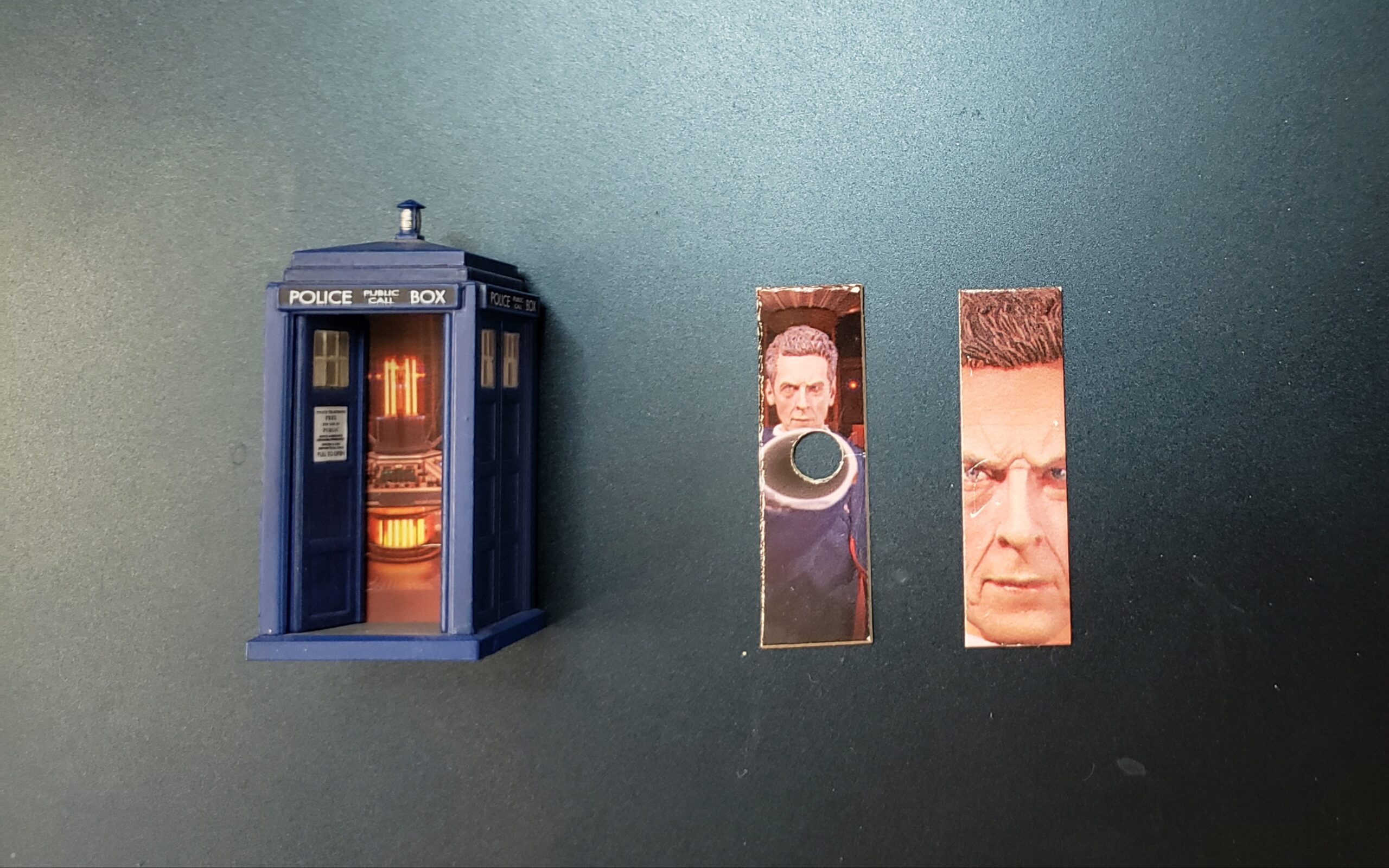 The Big Chief mini-TARDIS is every bit as cool as you would hope a tiny TARDIS would be in terms of its look. If you get a magnifying glass, you can probably even read the letters on the door sign. Where this one goes above and beyond, in order to match the details of its appearance in “Flatline,” is to have opening doors which can reveal a variety of backgrounds. These are printed on thin cardboard strips that can be switched in and out via a slot in the base of the TARDIS. One is the standard TARDIS control room; one is a closeup of the face of the Peter Capaldi toy, so it can peer through the doors from within, and one is a medium shot of the Capaldi toy reaching its arm toward the POV, with a hole in the center of the picture into which one of the extra hands can be inserted to show the Doctor reaching through the doors, as he does in the story. Like I said, Big Chief puts a lot of thought into these things. This toy could have been far less cool than it is and no one would ever have complained. Thankfully, Big Chief wouldn’t settle for a lesser TARDIS.
The Big Chief mini-TARDIS is every bit as cool as you would hope a tiny TARDIS would be in terms of its look. If you get a magnifying glass, you can probably even read the letters on the door sign. Where this one goes above and beyond, in order to match the details of its appearance in “Flatline,” is to have opening doors which can reveal a variety of backgrounds. These are printed on thin cardboard strips that can be switched in and out via a slot in the base of the TARDIS. One is the standard TARDIS control room; one is a closeup of the face of the Peter Capaldi toy, so it can peer through the doors from within, and one is a medium shot of the Capaldi toy reaching its arm toward the POV, with a hole in the center of the picture into which one of the extra hands can be inserted to show the Doctor reaching through the doors, as he does in the story. Like I said, Big Chief puts a lot of thought into these things. This toy could have been far less cool than it is and no one would ever have complained. Thankfully, Big Chief wouldn’t settle for a lesser TARDIS.
If I had one complaint about it, the doors are a little difficult to get closed again once they are open. Not so much when there are no backgrounds within, but that thin cardboard background is enough to make the doors stick open. The door space is so small that getting a finger in there to close them manually is also difficult. And while you could use a tool to get one door closed, the other would still be open. The best method I’ve found for getting them shut is to lightly whack the face of the TARDIS on a table, knocking the doors into closed position. Also, the strips themselves are kind of tricky to get in and out. They are a tight fit within the slot provided, are difficult to remove without tweezers, and, once in place, sit just outside of the slot itself, destabilizing the base and causing the TARDIS to sit at an angle. Still not enough to get me to drop it in the ratings, though, especially since it’s probably the only Big Chief TARDIS that I’ll ever own. Five TARDi all the way.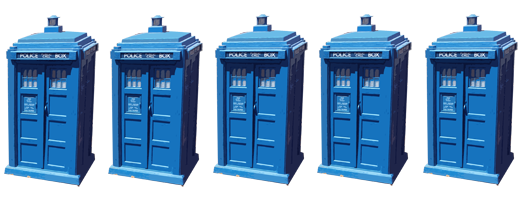

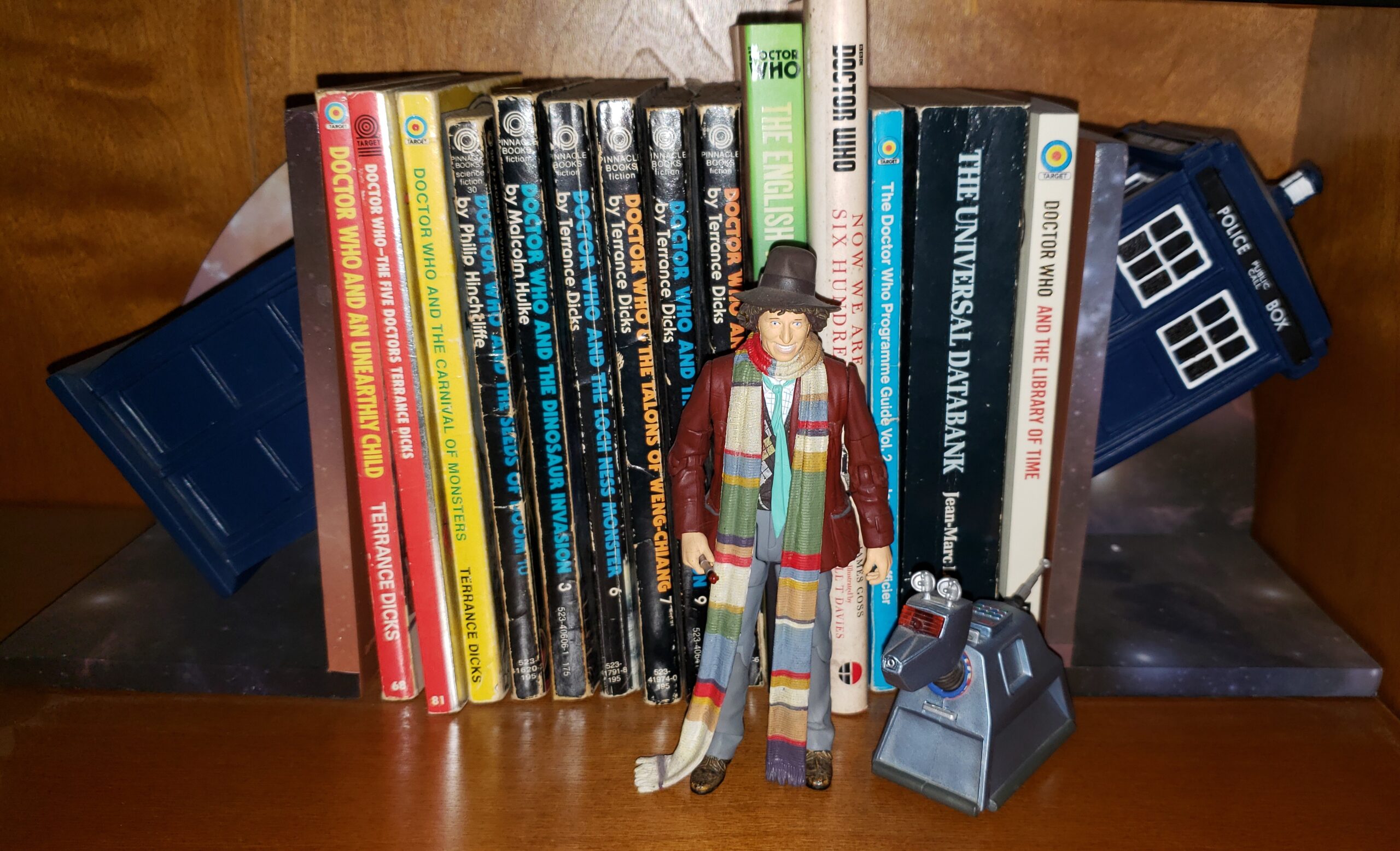
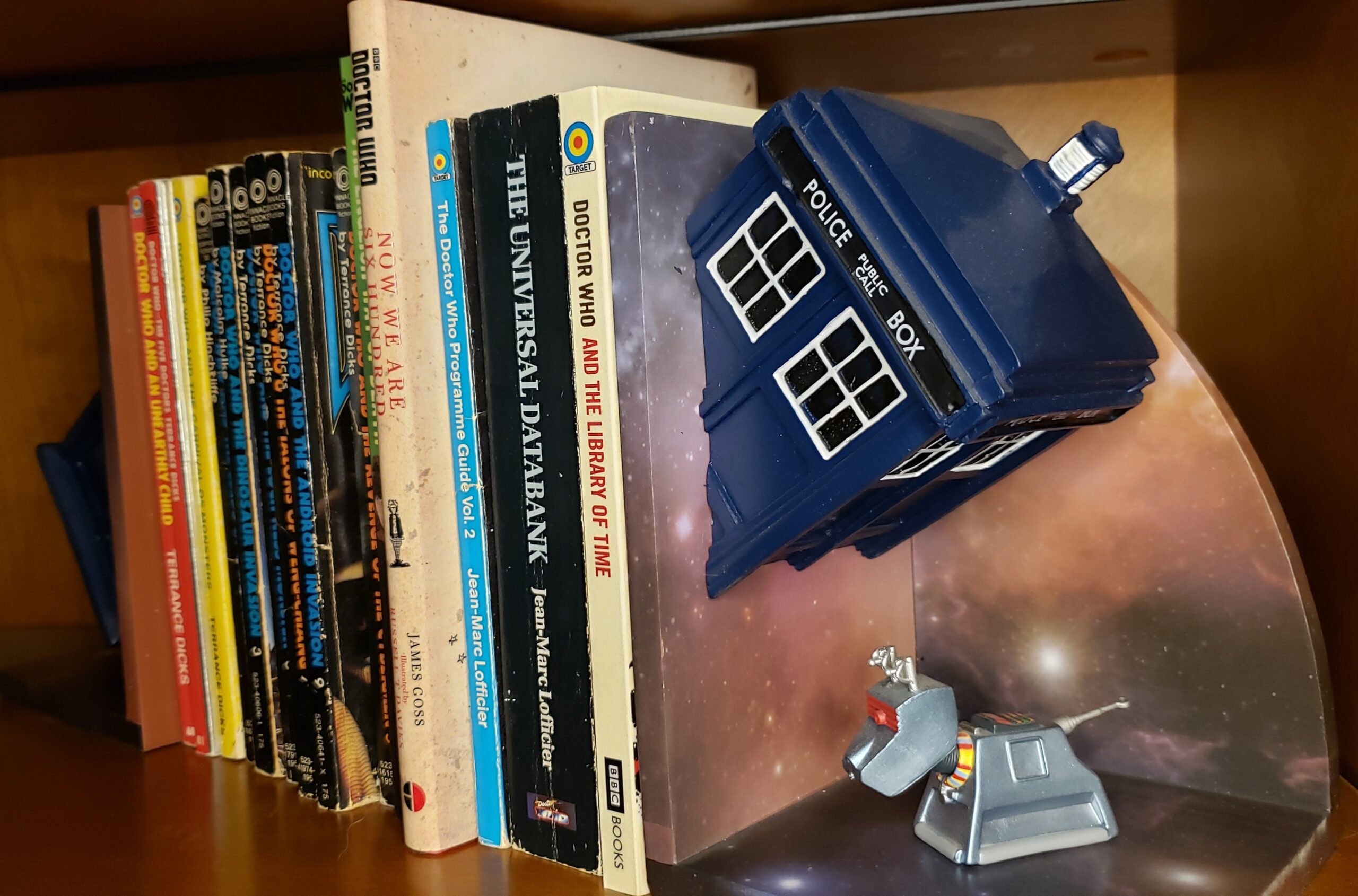
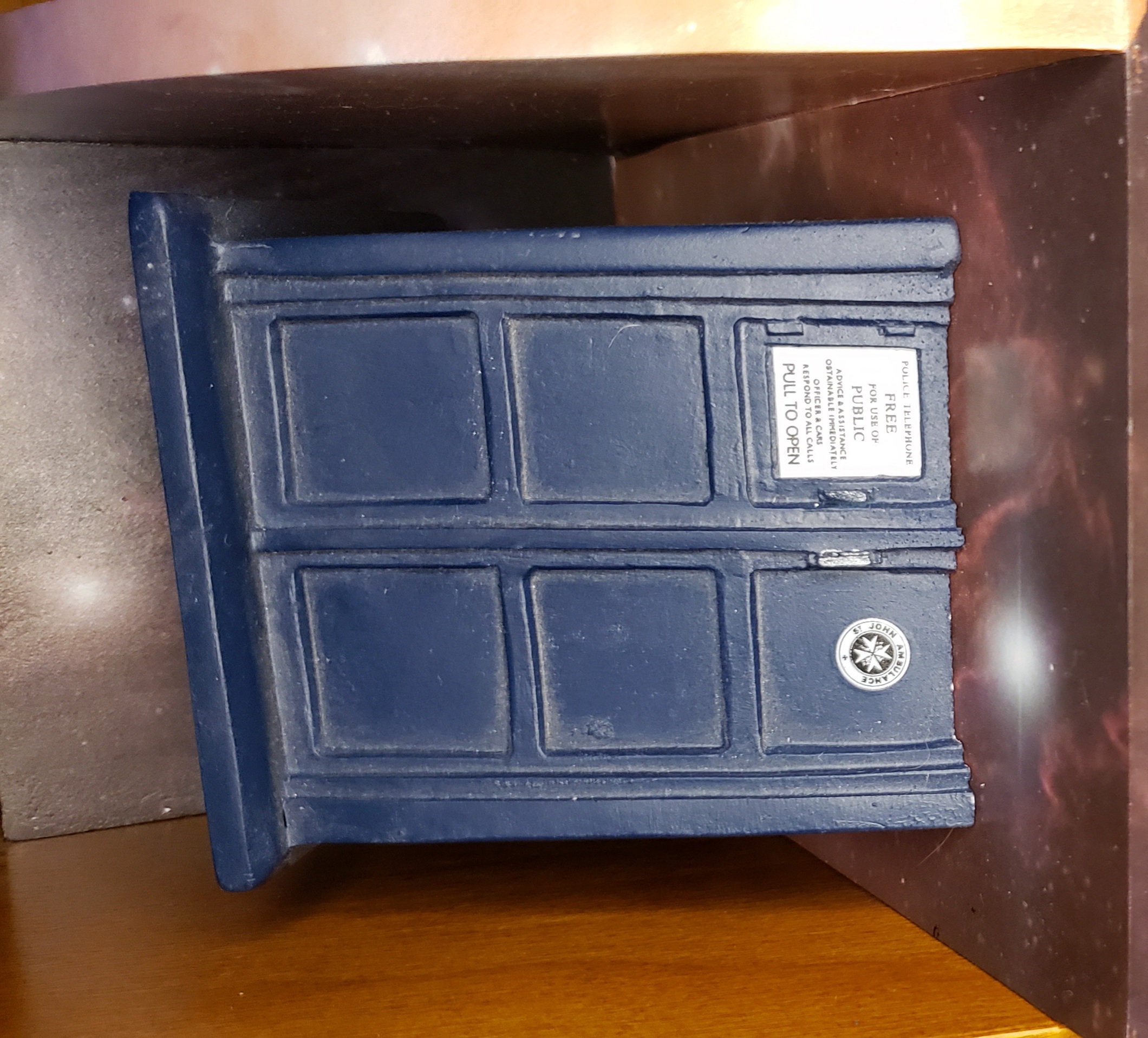
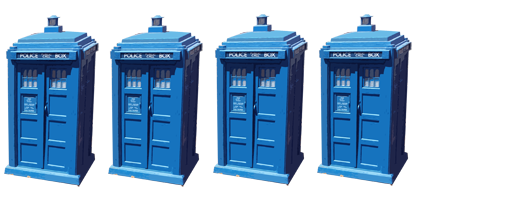 looking straight on at the bookends, so what does it matter? I dig these a lot. I give them a solid 4 TARDi.
looking straight on at the bookends, so what does it matter? I dig these a lot. I give them a solid 4 TARDi.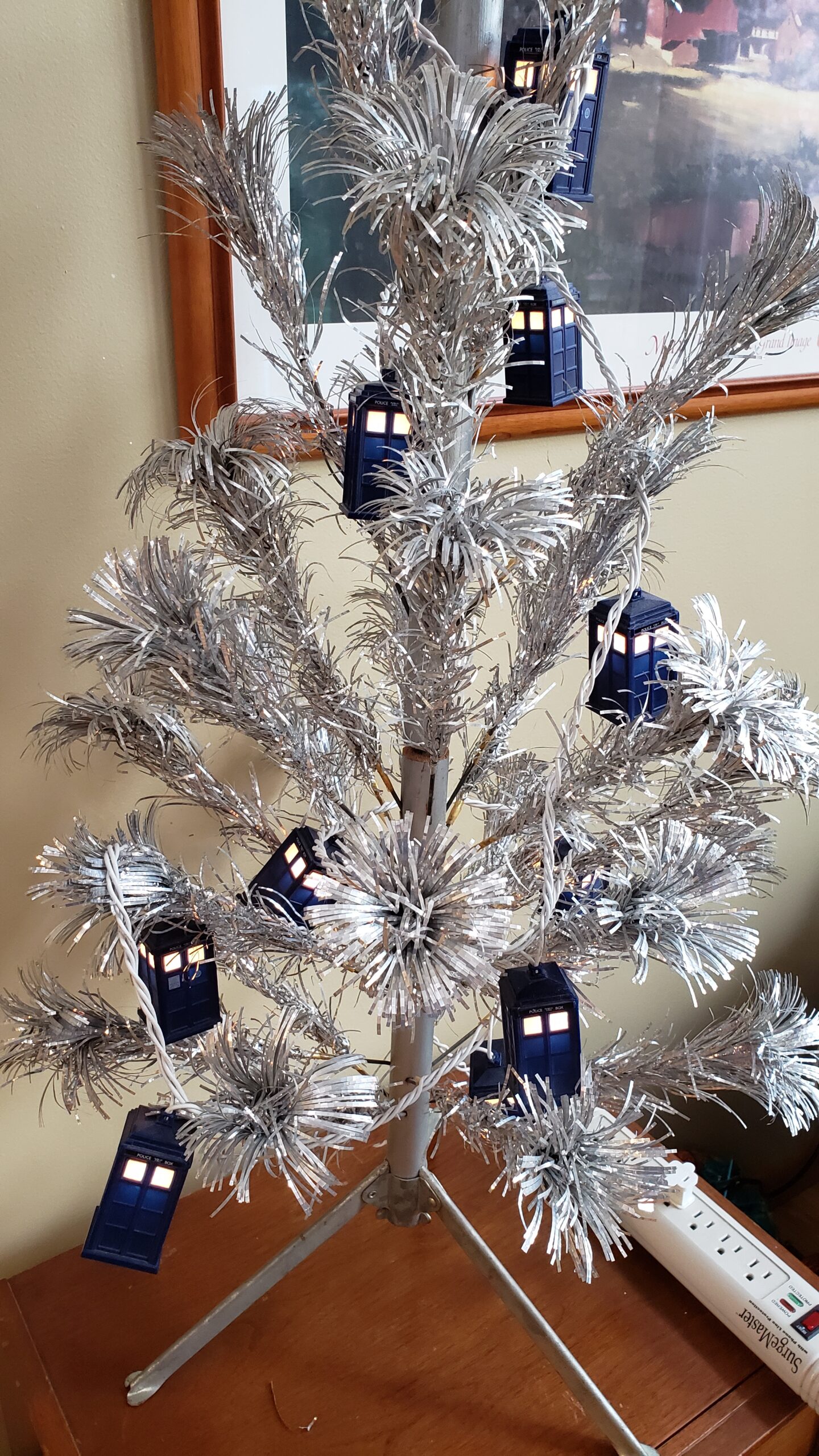
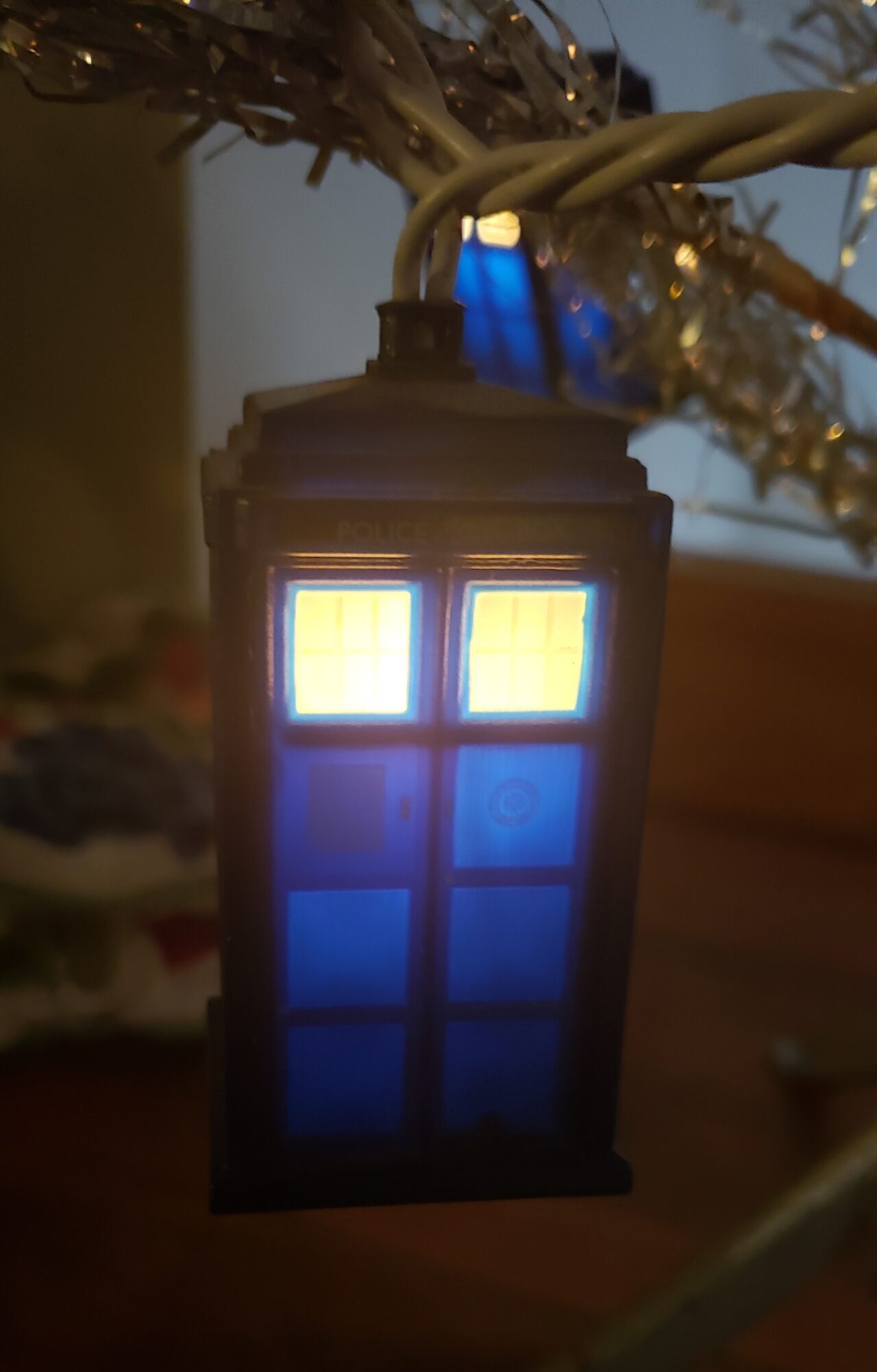 not one of those people, though, and count it as 10, since there are 10 individual TARDISes present and accounted for. Yep. That’s how I roll. One purchase increased my already sizeable TARDIS collection by 10. That’s some festive holiday efficiency for your ass.
not one of those people, though, and count it as 10, since there are 10 individual TARDISes present and accounted for. Yep. That’s how I roll. One purchase increased my already sizeable TARDIS collection by 10. That’s some festive holiday efficiency for your ass. 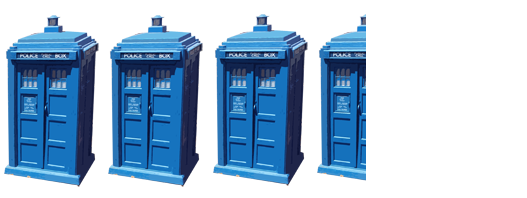 bookshelf (which is where mine usually live) then they’re great. I give ’em 3.5 TARDi.
bookshelf (which is where mine usually live) then they’re great. I give ’em 3.5 TARDi.
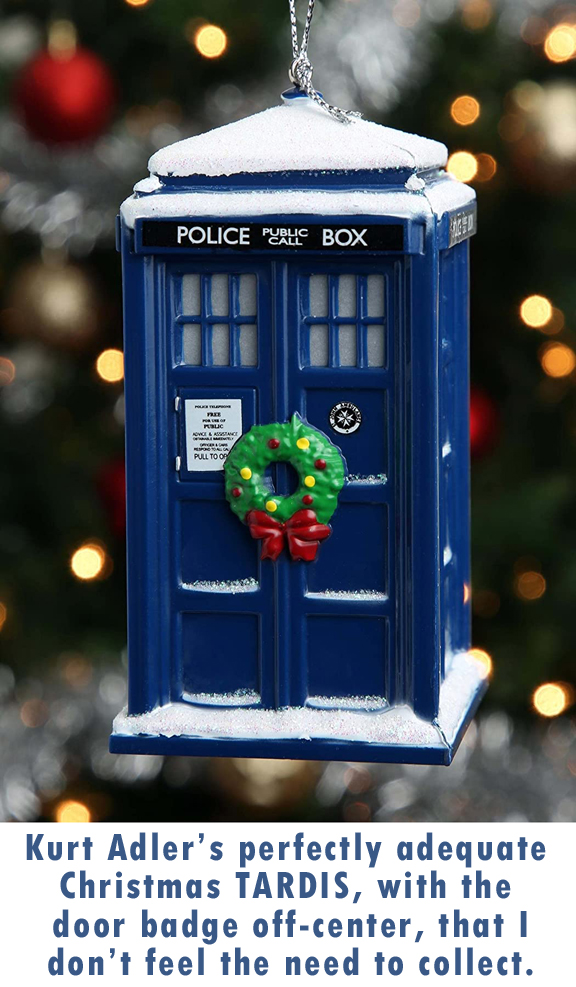

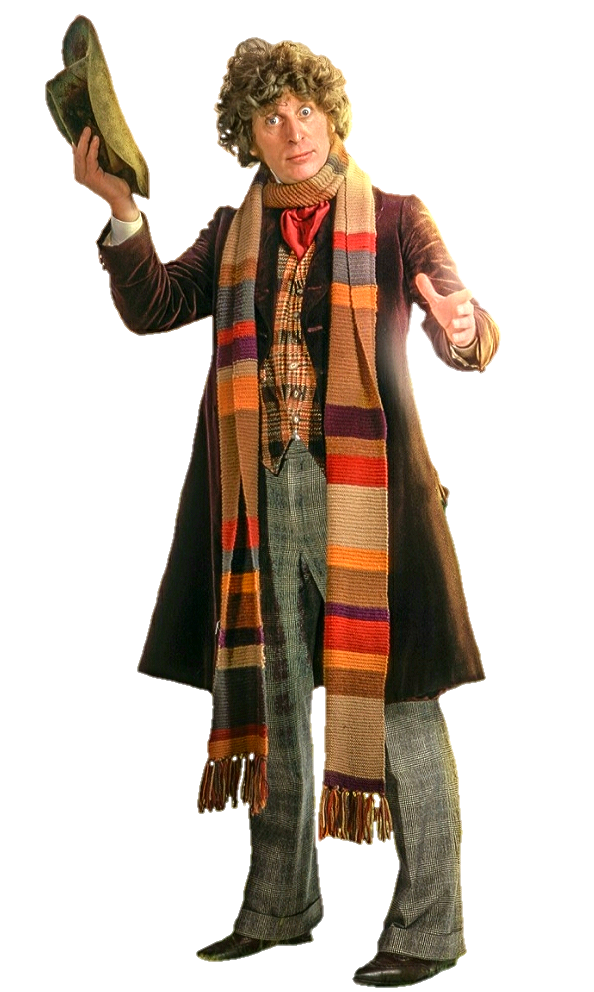 UPDATE 12-11-21: Okaaaaay. I have to issue a slight correction to the above paragraph here based on some new information I’ve found. While I still maintain the Janky Baker Kurt Adler Ornament above is still the Bizzaro Tom Baker, there’s a method to its madness I was unaware of. I would lay dollars to doughnuts that this ornament did use photo reference because I happened upon said photo reference. While looking for pictures of Tom Baker’s actual screen-worn scarf, I stumbled upon the image at right. It shows a veeeeery similar outfit and pose for Mr. Baker, clearly taken from an early season of the show. He’s not clad in bluejeans, but his cuffs are Super 70s ™ enough to appear to be bell bottoms. If anything, the ornament’s cuffs are more modest than the real pants. Coat color’s still wrong but is the right cut. The waistcoat isn’t too bad and has the same stripe pattern, albeit in a plaid instead of just the stripes. He has the same red tie and is holding his hat (also wrong color) in the same fashion. Scarf remains too short, but I suspect that the real baker probably had a loop of it hanging down his back. Or maybe they just had a stunt scarf for photo shoot days. The facial likeness is still off compared to the photo, but now that I see the photo they used, it’s not as far off as I’d thought. They capture elements of his expression, but the whole doesn’t reflect the likeness of the real guy. The hair sculpt doesn’t help. You can see what they were working from. I take back some of my ire at Kurt Adler’s work on this.
UPDATE 12-11-21: Okaaaaay. I have to issue a slight correction to the above paragraph here based on some new information I’ve found. While I still maintain the Janky Baker Kurt Adler Ornament above is still the Bizzaro Tom Baker, there’s a method to its madness I was unaware of. I would lay dollars to doughnuts that this ornament did use photo reference because I happened upon said photo reference. While looking for pictures of Tom Baker’s actual screen-worn scarf, I stumbled upon the image at right. It shows a veeeeery similar outfit and pose for Mr. Baker, clearly taken from an early season of the show. He’s not clad in bluejeans, but his cuffs are Super 70s ™ enough to appear to be bell bottoms. If anything, the ornament’s cuffs are more modest than the real pants. Coat color’s still wrong but is the right cut. The waistcoat isn’t too bad and has the same stripe pattern, albeit in a plaid instead of just the stripes. He has the same red tie and is holding his hat (also wrong color) in the same fashion. Scarf remains too short, but I suspect that the real baker probably had a loop of it hanging down his back. Or maybe they just had a stunt scarf for photo shoot days. The facial likeness is still off compared to the photo, but now that I see the photo they used, it’s not as far off as I’d thought. They capture elements of his expression, but the whole doesn’t reflect the likeness of the real guy. The hair sculpt doesn’t help. You can see what they were working from. I take back some of my ire at Kurt Adler’s work on this. 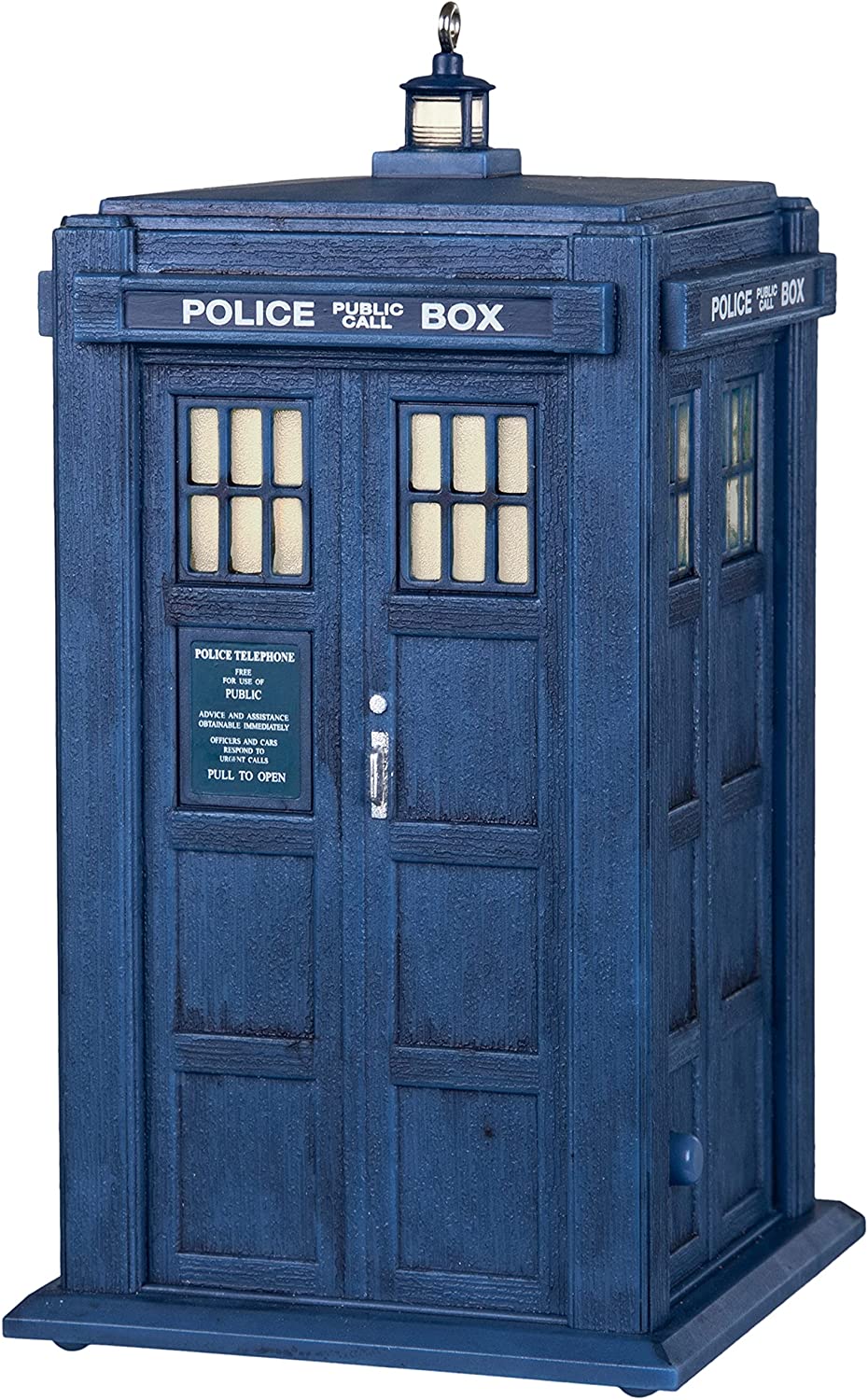

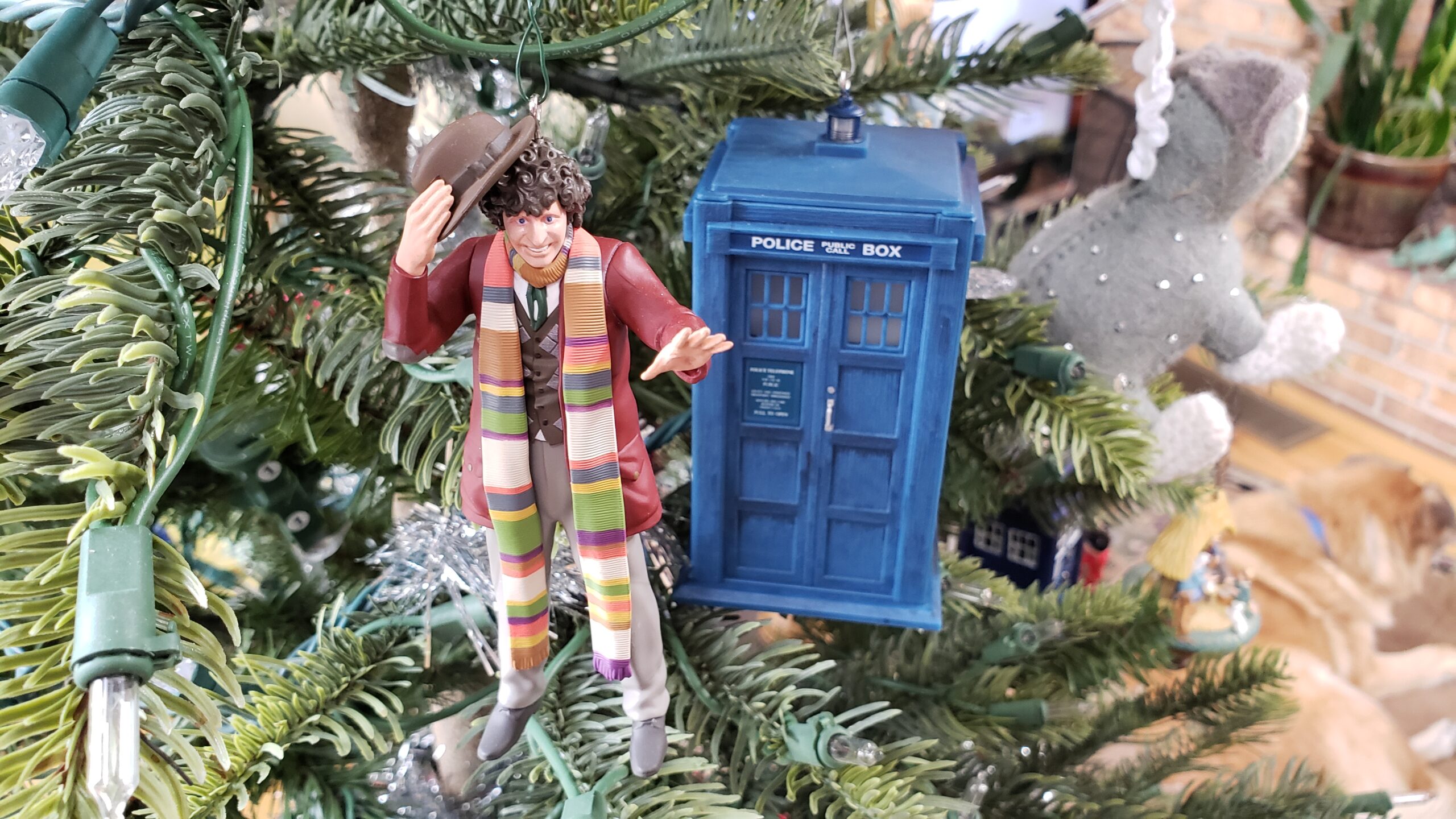
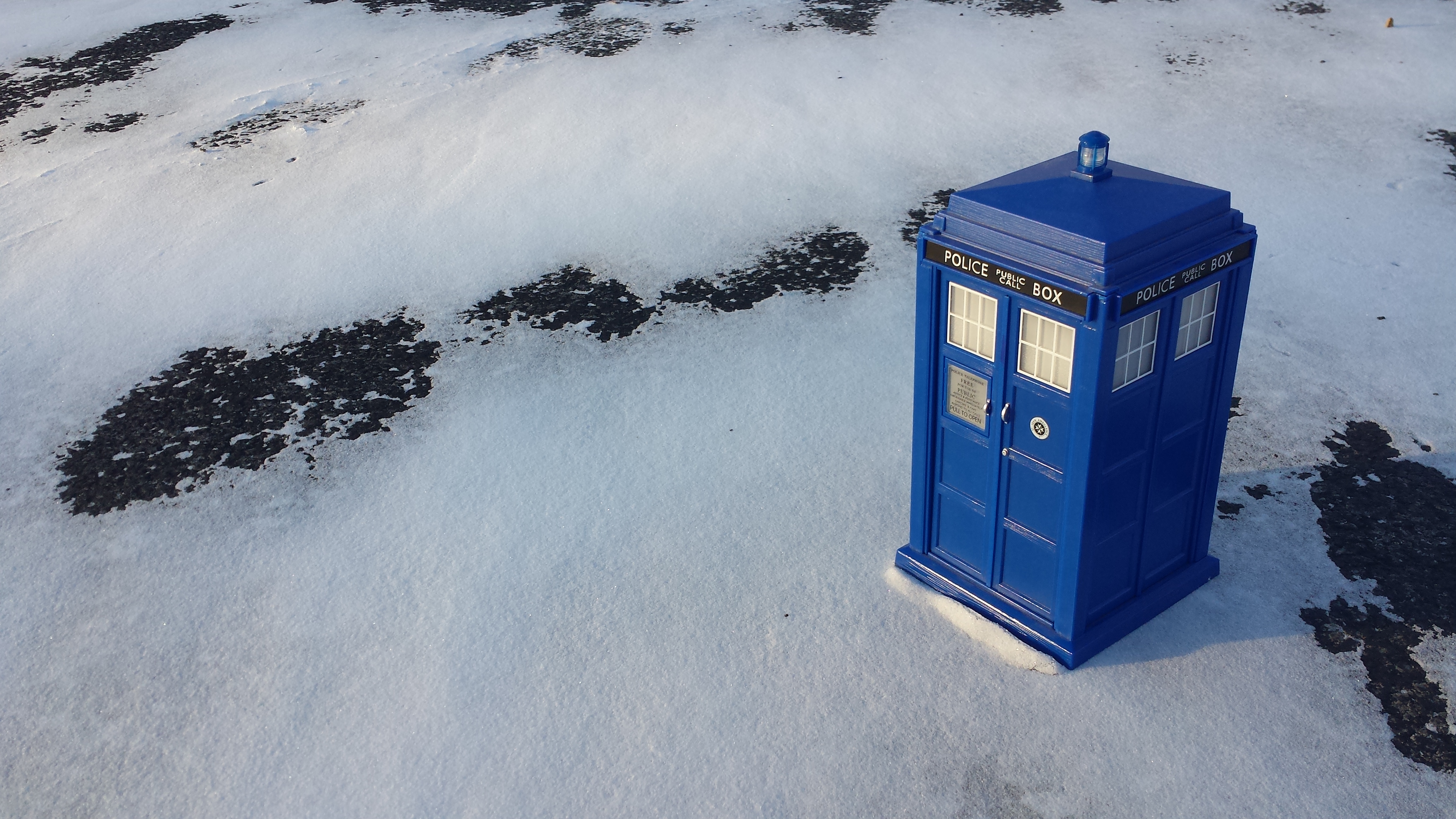 It’s been a good little while since I penned a new entry in my TARDIS Collector’s Corner series of posts. Which is odd, because I’d been having fun writing them. As of
It’s been a good little while since I penned a new entry in my TARDIS Collector’s Corner series of posts. Which is odd, because I’d been having fun writing them. As of 














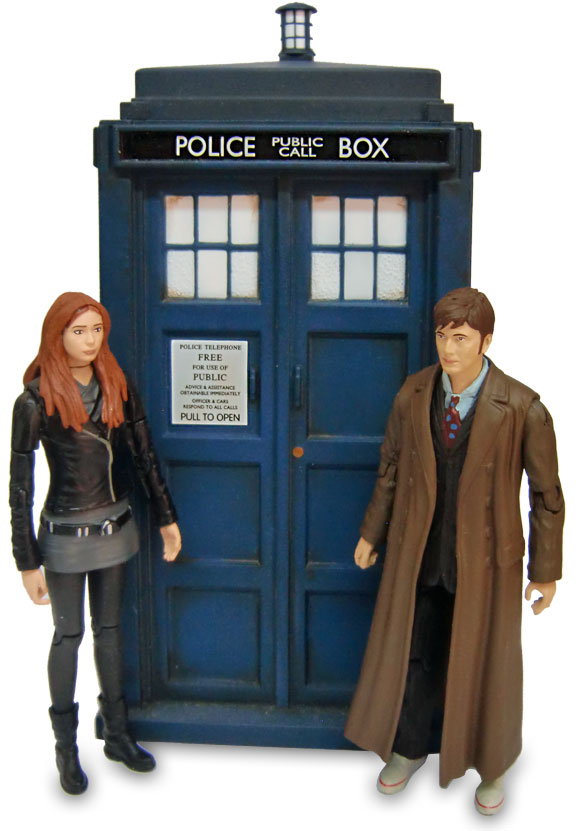 It seems that the 3.75″ line has kind of petered (no pun intended) out. Underground did some play sets for Matt Smith and then a cursory few things for the first season of Capaldi, but not so much in terms of the most recent season. They did release a third wave of figs, including a David Tennant figure, whose appearance is reflective of the flatter-haired version of his Doctor from Day of the Doctor. And, for a hot hour or so, I became wildly excited because I found the image at right which appears to depict not only a 3.75″ scale Tennant figure, but an Amy Pond in that scale (not his companion, but what evs), and, most amazing of all, a Tennant era TARDIS done in the 3.75″ scale. I was very excited indeed, because this would definitely be something I’d want for the collection. However, upon further research, this appears to actually be a die-cast TARDIS toy from 2006 that so happens to almost match the scale for Tennant’s newer 3.75″ figure (though not perfectly, to my eye). See the image below for the products that were apparently combined to make this “set.”
It seems that the 3.75″ line has kind of petered (no pun intended) out. Underground did some play sets for Matt Smith and then a cursory few things for the first season of Capaldi, but not so much in terms of the most recent season. They did release a third wave of figs, including a David Tennant figure, whose appearance is reflective of the flatter-haired version of his Doctor from Day of the Doctor. And, for a hot hour or so, I became wildly excited because I found the image at right which appears to depict not only a 3.75″ scale Tennant figure, but an Amy Pond in that scale (not his companion, but what evs), and, most amazing of all, a Tennant era TARDIS done in the 3.75″ scale. I was very excited indeed, because this would definitely be something I’d want for the collection. However, upon further research, this appears to actually be a die-cast TARDIS toy from 2006 that so happens to almost match the scale for Tennant’s newer 3.75″ figure (though not perfectly, to my eye). See the image below for the products that were apparently combined to make this “set.”

 Christmasy about them, as Amy is wearing her police officer outfit. However, if you stop to think about it, Amy Pond had returned to her police outfit for some honeymoon bedroom role-playing with her new husband Rory for the first Smith Christmas special. They just fail to specify what kind of… um, “Christmas adventures” Amy happened to be having on the trip, nor do they include Rory in his Roman Soldier attire to seal the notion. The packaging, as you can see in the accompanying image, boasts that it is non electronic and has opening doors. Those doors even have transparent windows, which I guess means Underground Toys just said “Hey, if we tell them it’s not electronic, we don’t have to hide it by darkening the windows. EFF it!” I declined to purchase this model. And I have half a mind to give it a two TARDI rating to spite Underground Toys for being cheap bastards on a Christmas cash-grab. However, Amy’s Role-Playing Honeymoon Bedroom garb alone may technically qualify this set as the most “adult” toys in the whole Doctor Who line–at least until they come out with Madame Vastra and Jenny figures–which is worth at least and extra few points. So I guess I’ll give this unpurchased-by-me set three.)
Christmasy about them, as Amy is wearing her police officer outfit. However, if you stop to think about it, Amy Pond had returned to her police outfit for some honeymoon bedroom role-playing with her new husband Rory for the first Smith Christmas special. They just fail to specify what kind of… um, “Christmas adventures” Amy happened to be having on the trip, nor do they include Rory in his Roman Soldier attire to seal the notion. The packaging, as you can see in the accompanying image, boasts that it is non electronic and has opening doors. Those doors even have transparent windows, which I guess means Underground Toys just said “Hey, if we tell them it’s not electronic, we don’t have to hide it by darkening the windows. EFF it!” I declined to purchase this model. And I have half a mind to give it a two TARDI rating to spite Underground Toys for being cheap bastards on a Christmas cash-grab. However, Amy’s Role-Playing Honeymoon Bedroom garb alone may technically qualify this set as the most “adult” toys in the whole Doctor Who line–at least until they come out with Madame Vastra and Jenny figures–which is worth at least and extra few points. So I guess I’ll give this unpurchased-by-me set three.)













